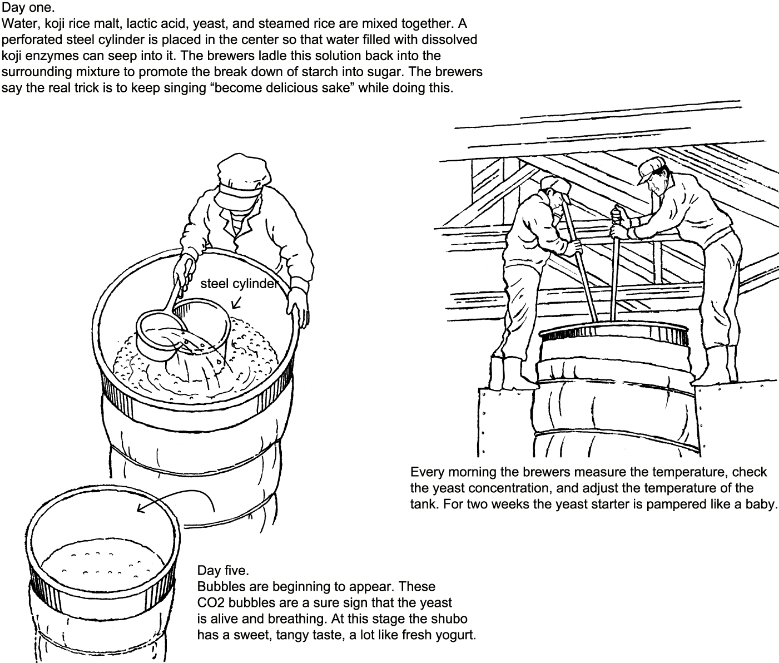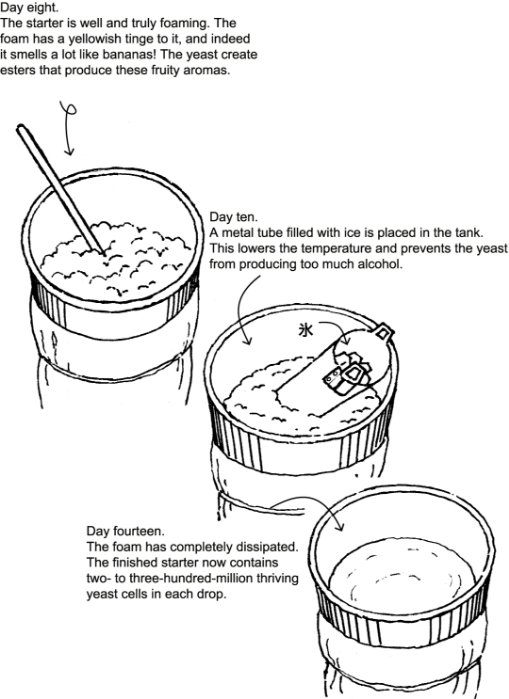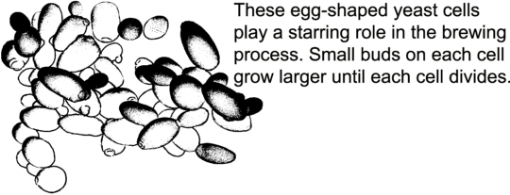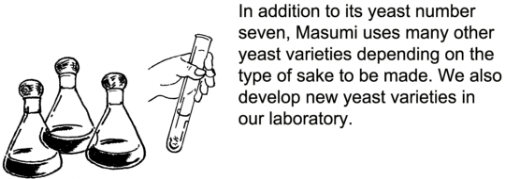5 Starting fermentation
Sake’s mother: shubo (yeast starter)
When the koji rice malt is ready, it is time to start yeast fermentation. The first step is to cultivate a robust yeast culture in a small tank. This yeast starter is called the shubo, which literally means “sake’s mother.” Once this starter mash is thriving, it will be moved to increasingly larger tanks and the volume of the mash will be increased by adding more water, steamed rice, and koji.
To create the yeast starter, warm water, koji rice malt, lactic acid, yeast, and steamed rice is added to a small tank. Enzymes in the koji begin breaking down starch to sugar, and the yeast start to multiply as they consume this sugar. Keeping the sugary mixture free from unwanted microbes, and keeping the yeast from producing too much alcohol too quickly, is no easy job. A pristine environment must be maintained and the starter temperature must be strictly regulated over the fourteen days required to develop the yeast culture. If this process is carried out properly, the result is a culture with two- to three-hundred-million thriving yeast cells in every drop.


Little giants: sake yeast
A sake yeast cell is only about 5 microns in length. Yet this tiny organism performs the invaluable service of turning sugar into alcohol. There are countless varieties of yeast out there in the world, but they don’t all have the magical ability to produce fine sake. Until the Meiji period (1868-1911), brewers made a lot of mistakes because they lacked the science needed to identify the best yeast strains. In 1905, a national system of sake-brewing research centers was established to identify superior yeast varieties and to promote their use by the nation’s sake brewers. Each newly discovered variety was given a number, and was then distributed by the national brewing association. Thanks to this “Brewing Association Yeast” program, the quality of sake has increased by leaps and bounds.

Masumi’s famous Yeast Number Seven
In 1946, Masumi swept the top awards at the regional and national sake appraisals, which got the attention of the brewing institute’s yeast scientist, Dr. Shoichi Yamada. Dr. Yamada visited the brewery and confirmed the presence of a very fine yeast in the fermentation vats. Masumi’s yeast was named “Brewing Association Yeast Number Seven”, and it soon became the favorite of brewers across the nation. Even today, Number Seven is the most widely used sake yeast in the world.





